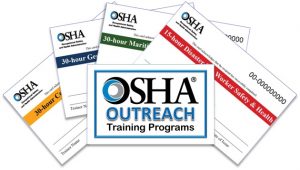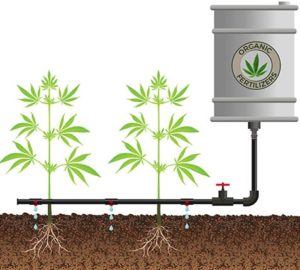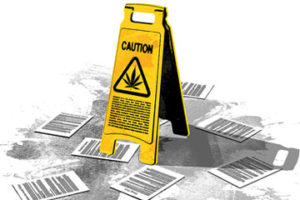 The cannabis industry, just like any industry, must be regulated for the safety of its workers. And while job growth prospects for California look promising, the cannabis industry is still relatively new and is constantly evolving. At the center of these industry changes, three (3) licensing authorities are responsible for licensing and regulating commercial cannabis activity in California:
The cannabis industry, just like any industry, must be regulated for the safety of its workers. And while job growth prospects for California look promising, the cannabis industry is still relatively new and is constantly evolving. At the center of these industry changes, three (3) licensing authorities are responsible for licensing and regulating commercial cannabis activity in California:
- Bureau of Cannabis Control (BCC)
- CalCannabis Cultivation Licensing
- Manufactured Cannabis Safety Branch
Under the Medicinal and Adult-Use Cannabis Regulation and Safety Act (MAUCRSA), and in addition to complying with all local regulations and ordinances, all cannabis businesses in California must have a State-issued business license from one of these agencies.
Areas of operations within the cannabis industry include cultivation, distribution, laboratory testing, manufacturing, and retail. Many workplace hazards will be common to some or all of these industry subdivisions, but each will also have its own, unique hazards to consider.
As the industry grows and more workers become involved in cannabis production, there is an increasing risk of workplace exposure to cannabis industry hazards. Workers, especially those venturing into a new and complex industry, will not inherently be conscious of these hazards. It is the responsibility of the employer to appropriately train employees on all applicable safety protocols.
Cal/OSHA 30-Hour General Industry Training
 California operates an OSHA-Approved State Plan, enforced by the agency commonly known as Cal/OSHA. California also has its versions of federal OSHA industry-based training programs, one of these being Cal/OSHA 30-Hour General Industry Training. This program was adapted from the Federal OSHA Outreach Training Program but is enforced through Cal/OSHA.
California operates an OSHA-Approved State Plan, enforced by the agency commonly known as Cal/OSHA. California also has its versions of federal OSHA industry-based training programs, one of these being Cal/OSHA 30-Hour General Industry Training. This program was adapted from the Federal OSHA Outreach Training Program but is enforced through Cal/OSHA.
The training must cover certain topics that are designed to help prevent occupational incidents by increasing awareness of and familiarity with safety and health hazards encountered generally in any cannabis industry workplace. Some training topics include health hazards, industrial hygiene, ergonomics, and electrical hazards.
For those operating within the cannabis industry, at least one supervisor and one employee are required to complete the Cal/OSHA 30-Hour General Industry Training, per Bureau of Cannabis Control (BCC) (16 CCR, Div. 42), California Department of Food and Agriculture (3 CCR, Div. 8, Ch. 1), and California Department of Public Health (17 CCR Div. 1, Ch. 13).
For those outside looking into the regulated cannabis industry, the program is voluntary in the state of California and does not meet the training requirements for any OSHA standards. However, several U.S. states and some contractors, municipalities, and other entities do require its successful completion. Training programs are recommended to span a wide range of topics but should devote particular attention to the hazards specific to the tasks employees are expected to perform.
Critical Cannabis Industry Training
Several sections of training covered within the Cal/OSHA 30-Hour General Industry Training would be especially beneficial if provided to all cannabis industry employees, but this program is not intended to fulfill all employee training requirements. The following are some of the most common cannabis industry hazards. While these hazards are present in many other industries, cannabis workers are recommended to receive additional training regarding these hazards due to the fluctuating and complex nature of their industry.
Slips, Trips, and Falls
Slip, trip, and fall hazards are common in any industry. According to the United States Department of Labor (DOL), they make up the majority of general industry accidents. The potential for these same-level incidents exists when unintended or unexpected changes occur between the feet and the walking surface. Some examples include items blocking pathways, loose mats, and wet walking surfaces.
Slip, trip, and fall hazards can come in many forms in the cannabis industry. For example, a cannabis harvester may encounter a slip hazard while conducting their work if the crops have been watered recently, or a cultivator may leave the power cord for an Ultra-Violet (UV) lamp unsecured, which could pose a trip hazard.
Walking-working surfaces training highlights and reinforces to affected employees the need for careful consideration of these potential hazards. Other training programs that may be helpful to mitigate these cannabis industry hazards include fall protection, Personal Protective Equipment (PPE), and housekeeping practices.
Cultivation Pesticides
 Under California law, a pesticide is any substance intended to, “control, destroy, repel, or otherwise mitigate a pest.” Whether they be animals, insects, plants, or other organisms, pests can cause damage and economic loss when introduced into an environment. Understandably, a cannabis operation would want to protect its high-value products from such pests.
Under California law, a pesticide is any substance intended to, “control, destroy, repel, or otherwise mitigate a pest.” Whether they be animals, insects, plants, or other organisms, pests can cause damage and economic loss when introduced into an environment. Understandably, a cannabis operation would want to protect its high-value products from such pests.
Just as pesticides are a concern for consumers, pesticide exposure for cannabis workers – such as cultivators, trimmers, or budtenders – is also a growing issue. And while the Environmental Protection Agency (EPA) has not registered any pesticide for use on cannabis, the California Department of Pesticide Regulation (DPR), in compliance with the California Food and Agricultural Code (FAC), has developed standards for the use of certain pesticides and maximum tolerances for said pesticides in harvested cannabis.
The use of any pesticide that violates the FAC may result in large penalties. Respiratory protection training is the best way to ensure that employees working with pesticides of any kind are doing so in a safe and compliant manner. Respiratory protection training may also help with an allergen, mold, or irritant hazards. Personal Protective Equipment (PPE) and hazard communication training may be needed as well.
Machinery & Powered Industrial Vehicles
 Machinery-related cannabis industry hazards are primarily associated with manufacturers – particularly within the extraction process. High heat and pressure are used in extraction processes, creating fire and explosion hazards. Extraction typically involves the use of high-pressure machinery, butane, Carbon-Dioxide (CO2), and/or flammable/combustible liquids, all of which are hazardous.
Machinery-related cannabis industry hazards are primarily associated with manufacturers – particularly within the extraction process. High heat and pressure are used in extraction processes, creating fire and explosion hazards. Extraction typically involves the use of high-pressure machinery, butane, Carbon-Dioxide (CO2), and/or flammable/combustible liquids, all of which are hazardous.
Proper Lockout/Tagout (LOTO) practices and procedures safeguard workers from the release of hazardous energy that machines can store. LOTO can help prevent serious injuries, but only if those procedures are properly implemented. LOTO training is the best way to ensure that employees properly carry out the procedures.
Additionally, employees who regularly deal with large machinery should receive regular Personal Protective Equipment (PPE) and machine guarding training. Powered Industrial Vehicles (PIVs) like trimmers, forklifts, or motorized hand trucks are often used in the cannabis industry to quickly and efficiently transport products or equipment.
These types of vehicles or trucks pose not only operator-error hazards but also improper care or maintenance hazards. Keep in mind that only trained and certified workers may operate a forklift. Safe operation is typically covered for powered industrial vehicles or truck training, which is designed to help an employee better understand safe operation practices when undertaking these tasks.
Beyond Cal/OSHA: Additional Cannabis Industry Hazards
 Together with Cal/OSHA employee training, cannabis businesses must develop and maintain certain documents such as a Waste Management Plan, Injury and Illness Prevention Program, Hazardous Materials Business Plan, and Emergency Action Plan.
Together with Cal/OSHA employee training, cannabis businesses must develop and maintain certain documents such as a Waste Management Plan, Injury and Illness Prevention Program, Hazardous Materials Business Plan, and Emergency Action Plan.
Many cannabis businesses will need to perform waste characterization, identify compliant waste disposal procedures, and engage in proper recordkeeping and housekeeping practices regarding the transportation of cannabis products. The following are a few additional considerations that may be applicable to cannabis businesses:
- Hazardous Waste Management: Training that covers recordkeeping and management requirements, waste classification, container, and tank management, and tiered permitting.
- Universal Waste Management: Training that covers the generation, accumulation, treatment, and disposal of common waste designated as “universal,” such as batteries or electric lamps.
- DOT Hazmat Employee: Training that covers hazardous materials transportation regulations, the Hazardous Materials Table, emergency response requirements, preparation of shipping papers, and marking, labeling, and placarding.
- Uniform Hazardous Waste Manifest: Training that covers completion, retention, and distribution of the Uniform Hazardous Waste Manifest under the e-Manifest system for California hazardous waste shipments.
Cannabis Industry Hazards Training
 A 2018 study from Colorado State University found that around 46% of legal cannabis industry workers surveyed reported they received “little to no” safety training since the beginning of their employment.
A 2018 study from Colorado State University found that around 46% of legal cannabis industry workers surveyed reported they received “little to no” safety training since the beginning of their employment.
Cannabis industry hazards present themselves in a multitude of forms; providing regular, function-specific, and effective safety training is a vital component of all employers’ efforts to protect their employees and their businesses.
California business owners should strive to attain and maintain a safe working environment for their employees. For regulated cannabis businesses in California, they will need to be provided the Cal/OSHA 30-Hour General Industry Training required by the Bureau of Cannabis Control (BCC), California Department of Food and Agriculture (CDFA), and California Department of Public Health (CDPH) regulations as codified in the California Code of Regulations.
Though aimed broadly at all industries, this training program caters to the job functions commonly performed in cannabis operations.
Let us know what you think.





Responses